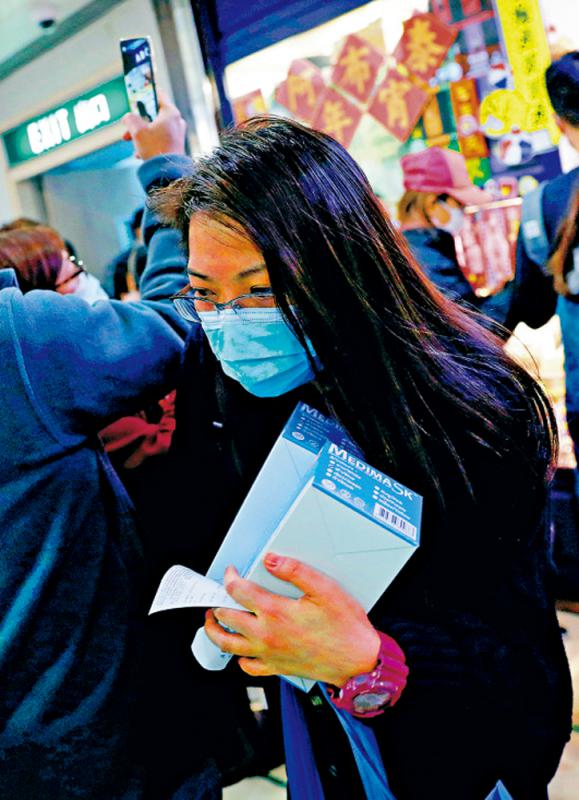———— Release time:2020-02-14 Edit: Read:29 ————

Figure: During the outbreak of the new coronavirus in Wuhan, the blockchain can be used in intermediate links such as Internet fundraising and online transactions, for donors to review the allocation of donation resources, and make donations open and transparent.
During Chinese New Year, the epidemic of new coronavirus in Wuhan has greatly affected people's lives across the country. Blockchain helps fight new coronavirus in the terms of source tracing, tracking and price monitoring of equipment such as medical drugs and mask protective clothing; on-chain tracking and prevention of patients' personal medical records and the process of diagnosis and treatment; tracking of donations; public opinion monitoring and rumor identification; public data sharing and personal privacy data protection
As early as 2016, JD Group fully launched the application exploration and R & D practice of blockchain technology in JD Group's business scenarios, and in the process accumulated a lot of blockchain deployment experience and underlying technology R & D capabilities. Also in 2016 , Alibaba reached a cooperation with PricewaterhouseCoopers and announced that it will use blockchain to create a transparent and traceable cross-border food supply chain and build a more secure food market. Since then, Tmall luxury platform Luxury Pavilion launched the world's first authentic traceability function based on blockchain technology. Tmall International announced that it has successfully integrated blockchain technology into the company's cross-border logistics business.
Blockchain is applied at the supply chain level, including many links such as customs declaration and customs clearance, inspection and quarantine, cross-border transportation, overseas warehousing, procurement and distribution. This technology is applied to the deployment of materials in epidemic areas (such as medical drugs and mask protective clothing) under the epidemic situation, which can greatly alleviate the risks of delay, loss, damage, fakes and so on.
In mid-August 2017, Ali Health cooperated with the Changzhou Tianning District Health and Family Planning Commission on a pilot project of "Medical Alliance + Blockchain".
The city's Health and Family Planning Commission logs data information generated by various medical institutions into the blockchain to ensure that each piece of data from each data provider is credible and cannot be tampered with, and avoids the formation of "data islands" of hospital data through the data sharing reciprocity mechanism. It will form a symbiotic circle of interests, and can also accurately locate the entire flow of medical sensitive data. Imagine that if such data can be circulated throughout the country, the chaotic scene of hospitals fighting for and collecting donations may be alleviated when the epidemic comes.
On the patient side, if the blockchain database accurately and efficiently records every vital sign of the patient, all medications used, each medical information, disease, surgery and other information, it can greatly reduce the operating time, cost and risk of medical institutions At the same time, it achieves accurate strategy formulation, efficient resource utilization, targeted product docking in effective markets, etc., and improves the medical experience of patients. It will also make medical resources more efficient in emergency situations.
The blockchain can also be applied in the intermediate links of the foundation's official website, third-party persuasion platforms, and online transactions in the process of Internet fundraising, for donors to review the allocation of donation resources, making donations open and transparent and independent accounting.
The role of the media in public health events is critical, and blockchain technology has a limited role in evading fake news and reshaping news objectivity. Of course, the vision described by the believers of blockchain technology is to place the news generation process on the chain in accordance with the time sequence, and through consensus algorithms, use a voting mechanism to determine whether the content is on the chain, thereby eliminating false information providers. However, at most, it only facilitates people to verify the source of the news. It cannot guarantee that the news that most people agree with is the real news.
Today's social media is not lacking in content. What is lacking are expert reviews that are pushed precisely when hot events occur. For example, as soon as the epidemic situation emerges, the audience looks forward to the authoritative interpretation of the epidemic situation by medical experts, and the government departments to interpret the policies issued against the epidemic situation, but the media is full of alarmists about the epidemic situation and holidays. We can use consensus algorithms to make more high-quality content disclosed and creators of high-quality content get more rights. Instead of just relying on the audience ’s preferences, then social media push a lot of content of the same theme to the audience, and let the audience immerse them in authenticity.
In fact, many of the above practices and ideas have claimedthat they have already been applied. However, as of now,
the author has not seen the related technology shine. Intheprocess of preventing epidemics, the role of the blockchain in spreading data under the premise of protecting privacy is not reflected. In fact, during this outbreak, operators and local public security departments, etc. use excel's extensive copy without regard to personal privacy protection to distribute related information. In terms of information flow, the data provider's right to use the data has not been realized. These are the basic problemsthat blockchain technology should be able to solve quickly.
Each crisis is a proving ground for strength in all aspects.Only in terms of blockchain technology applied to entities,the blockchain technology is lacking in the response to
this epidemic, showing that the technological development is in the initial stage and has not played its due role in improving efficiency.
No one wants the epidemic come back, but crisis events are always endless. It is hoped that practitioners of blockchain technology can exercise the emergency capabilities of blockchain technology against the background of the ongoing epidemic, let the technology contribute more to improve people's living standards.